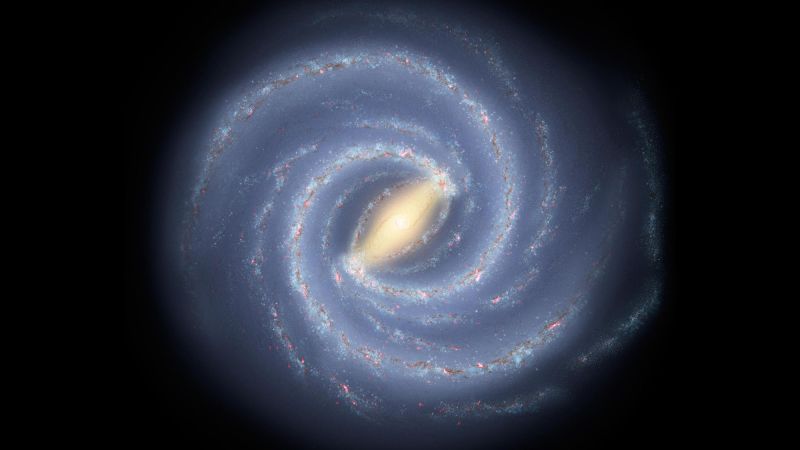In the vast expanse of the universe, a remarkable scientific statement has emerged regarding the anticipated cosmic event known as the collision between the Milky Way galaxy and its most significant neighboring galaxy, Andromeda. Astronomers have been evaluating this potential merger, dubbed “Milkomeda,” for over a century, with predictions dating back to 1912. However, recent research indicates that the probability of this galactic confrontation occurring may be less definitive than previously believed, opening dialogues on the dynamics of our cosmic neighborhood.
At a distance of about 2.5 million light-years, the Milky Way and Andromeda have been observed to be hurtling toward each other at an impressive speed of roughly 223,694 miles per hour (100 kilometers per second). Initially, this celestial arrangement suggests an impending collision, but recent findings challenge that notion. The Local Group, a galaxy cluster that includes the Milky Way and approximately 100 smaller galaxies, has introduced variables that could potentially alter this celestial dance. Among these smaller galaxies are significant entities such as the Large Magellanic Cloud (LMC) and the Triangulum galaxy, also known as M33.
In this groundbreaking research, astronomers meticulously incorporated the gravitational impacts of nearby galaxies into their models, running 100,000 simulations with data obtained from both the Hubble and Gaia space telescopes. The results were striking. They revealed that the chance of a direct collision between the Milky Way and Andromeda within the next decade of 10 billion years stands at around 50%. More intriguingly, the chances of such a collision occurring in the previously anticipated timeline of 4 to 5 billion years diminish to only about 2%. This compelling research has been documented in a study published in the journal Nature Astronomy.
Researchers have articulated that the merger of both galaxies will likely result in the transformation of their spiral shapes into a singular elongated galaxy. The collision will unleash enormous energy, manifesting as “cosmic fireworks,” where gas from both galaxies is channeled toward a shared central black hole, generating an immense amount of radiation before being irrevocably consumed by the hole. Carlos Frenk, a professor at Durham University in England and co-author of the study, underscored the transformative power of such cosmic mergers. He noted that the previously anticipated unequivocal doom of the Milky Way may not be as certain as once thought, indicating that there is now “a very good chance that we may avoid that scary destiny.”
Despite the more optimistic outlook regarding the Milky Way-Andromeda collision, many uncertainties remain. The gravitational interactions within the Local Group introduce complexity, particularly regarding the Milky Way’s likelihood of colliding with the LMC within a relatively shorter timeframe of 2 billion years, which could significantly impact its structure. With a mass only about 15% that of the Milky Way’s, the gravitational forces exerted by the LMC and M33 contribute to subtle changes in the Milky Way’s movement, affecting the merger’s probability.
Dr. Till Sawala, the lead author of the study and an astronomer at the University of Helsinki in Finland, offered insight into the delicate gravitational balletic dance of these galaxies. While M33’s gravitational influence pulls the Milky Way toward it, the LMC creates motion diverting the Milky Way away from Andromeda, thereby reducing the chance of a catastrophic merger. This research also considered various unknown variables, such as the present motions and masses of the galaxies, providing a more comprehensive understanding of the potential outcomes.
Significantly, the findings highlight the necessity of addressing the inherent uncertainties involved in galactic dynamics. Geraint Lewis, professor of astrophysics at the University of Sydney, remarked on the implications of these results, acknowledging that while the story of a violent collision looms large, it is not as straightforward as previously presumed. Scott Lucchini, a postdoctoral fellow affiliated with the Institute for Theory and Computation at the Center for Astrophysics at Harvard & Smithsonian, emphasized the accuracy achieved through accounting for uncertainties in measurements.
As astronomers gear up for more data from the Gaia space telescope expected in 2026, they anticipate refining their understanding of the trajectory of Andromeda and the Milky Way. Scientists believe that while the fate of the sun, which is forecasted to undergo a transformation into a red giant within the next 5 billion years, may have severe implications for Earth, the fate of the galaxies remains uncertain.
In conclusion, the inherent complexities of galaxies render specific predictions increasingly challenging. Each step taken toward understanding the intricate cosmos underscores the ongoing nature of astronomical inquiry. With emerging data and innovative methodologies, researchers are continually striving to grasp the journey of celestial entities as they navigate through the universe, signaling that the fate of the Milky Way and Andromeda remains an open question, with every simulation and observation adding depth to our celestial narrative.



